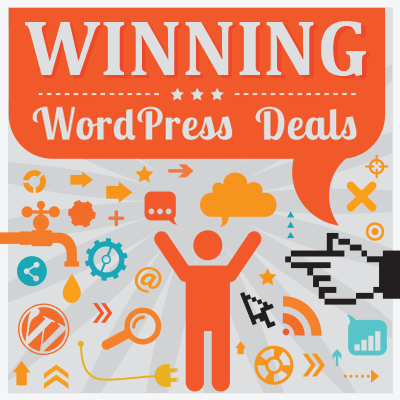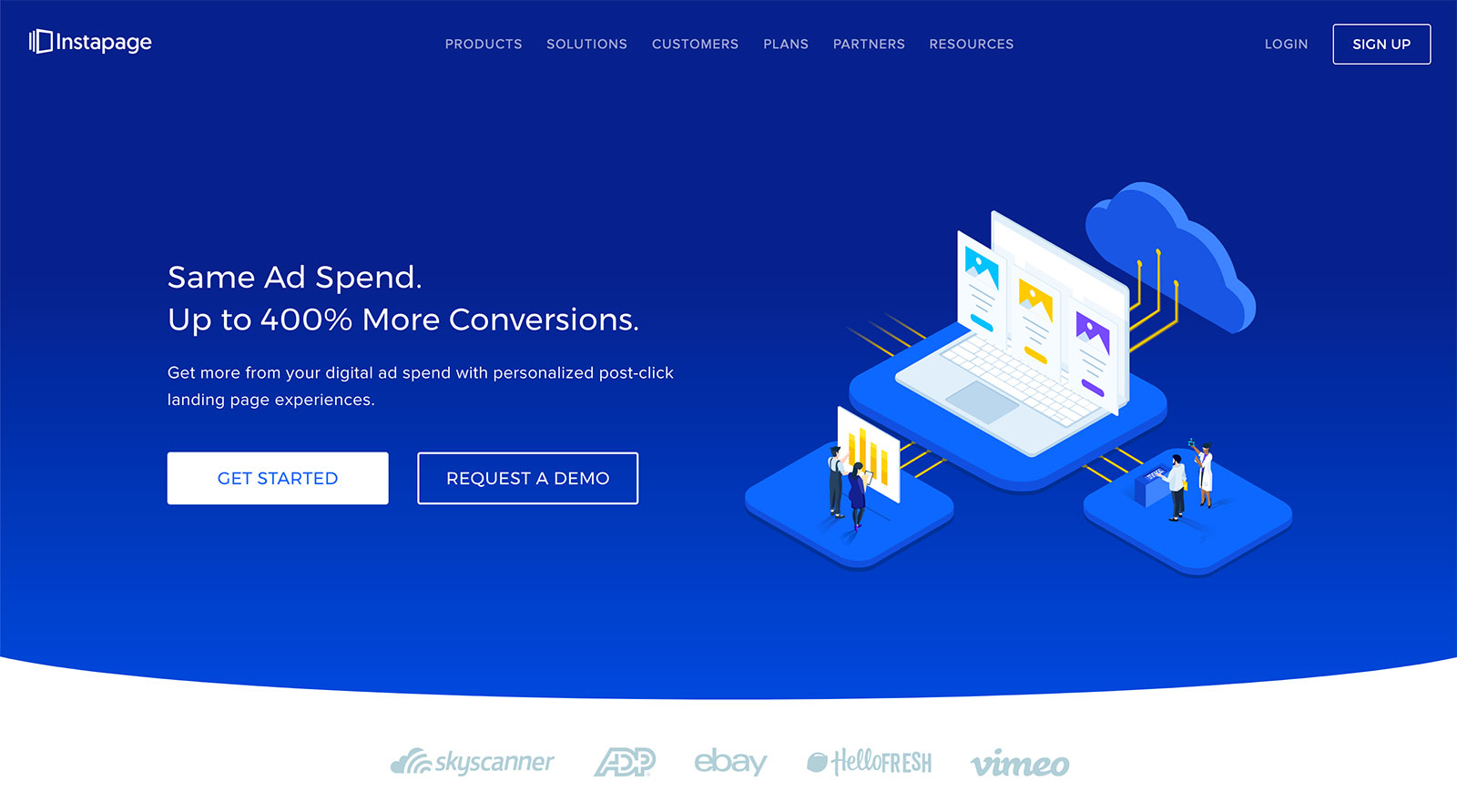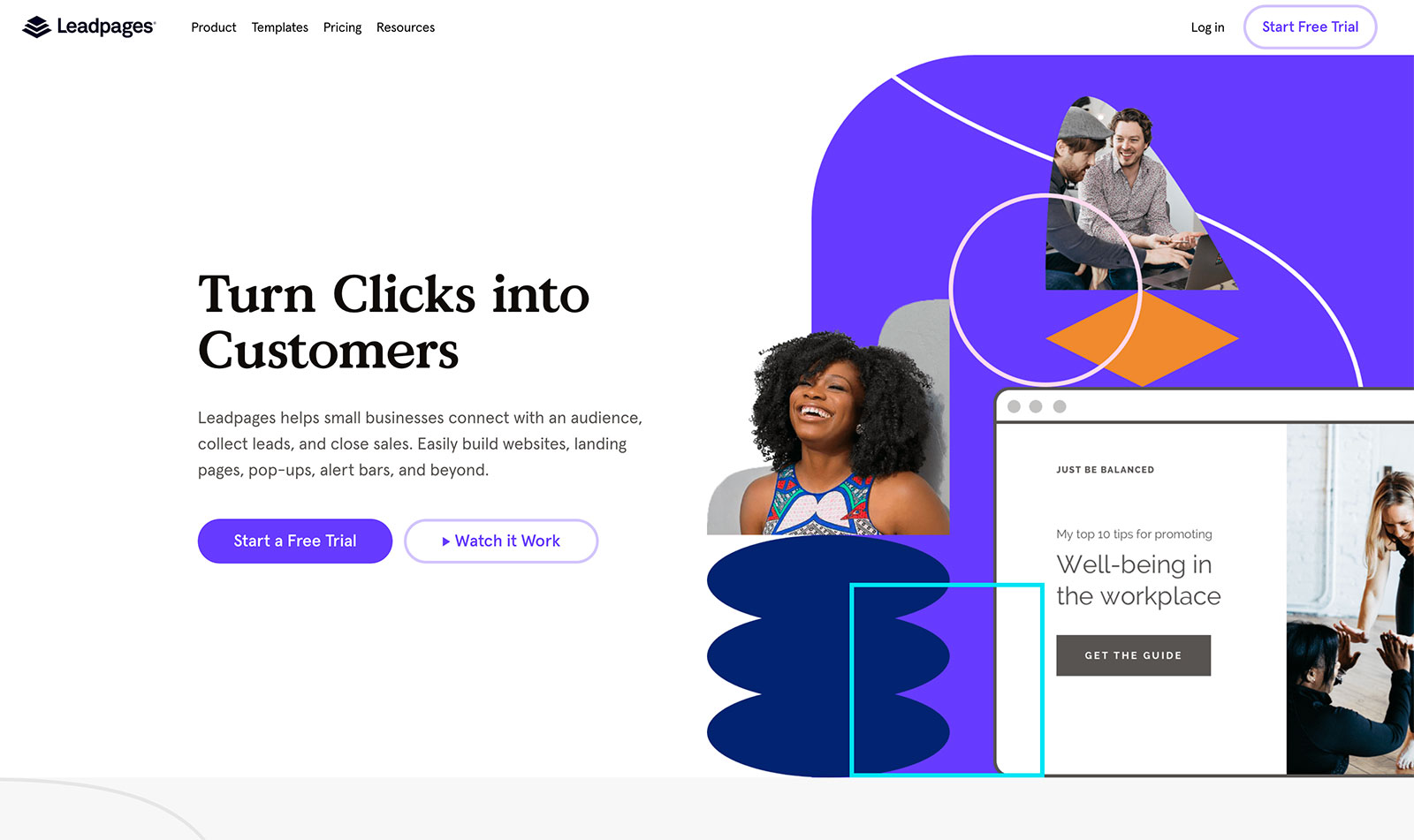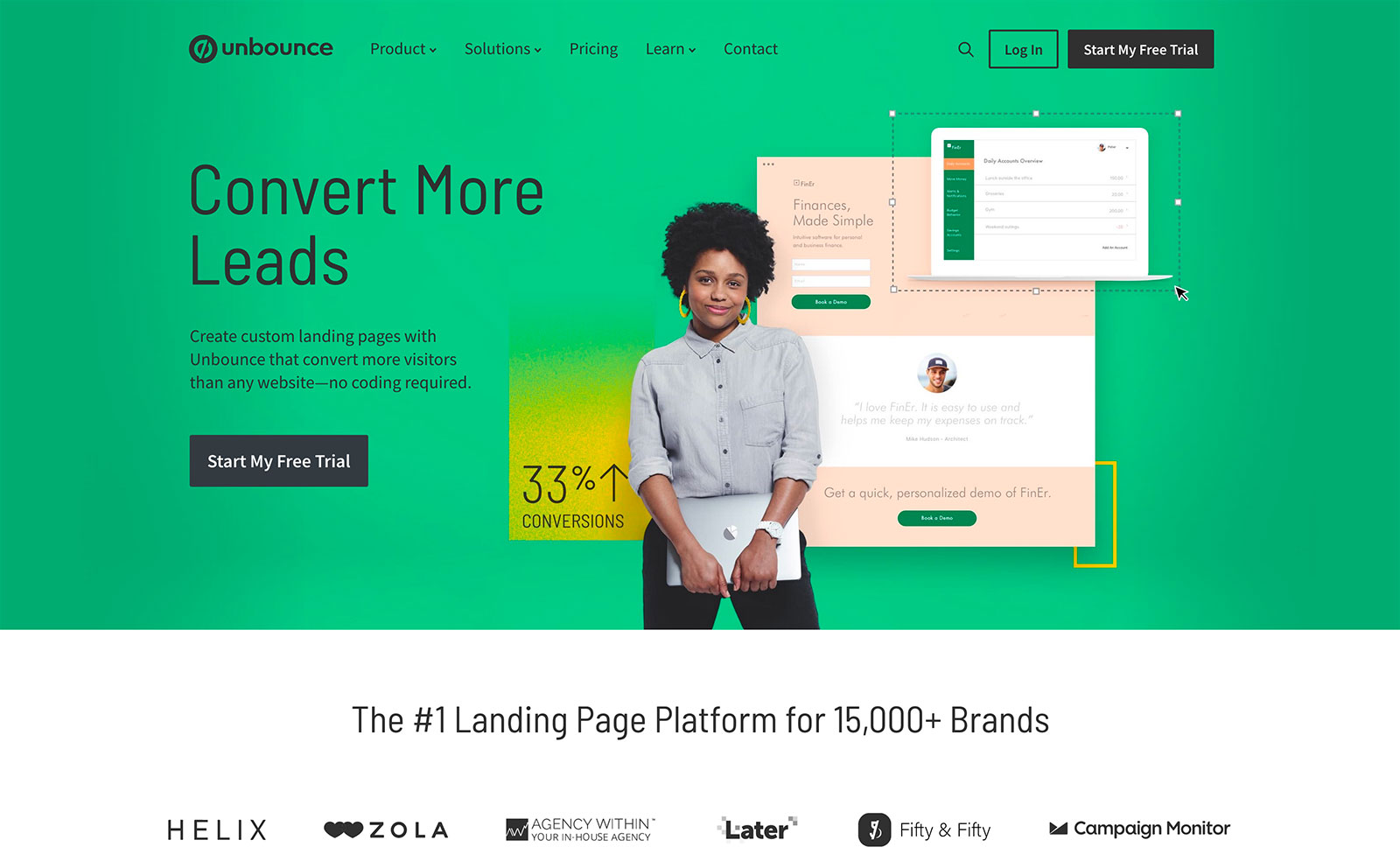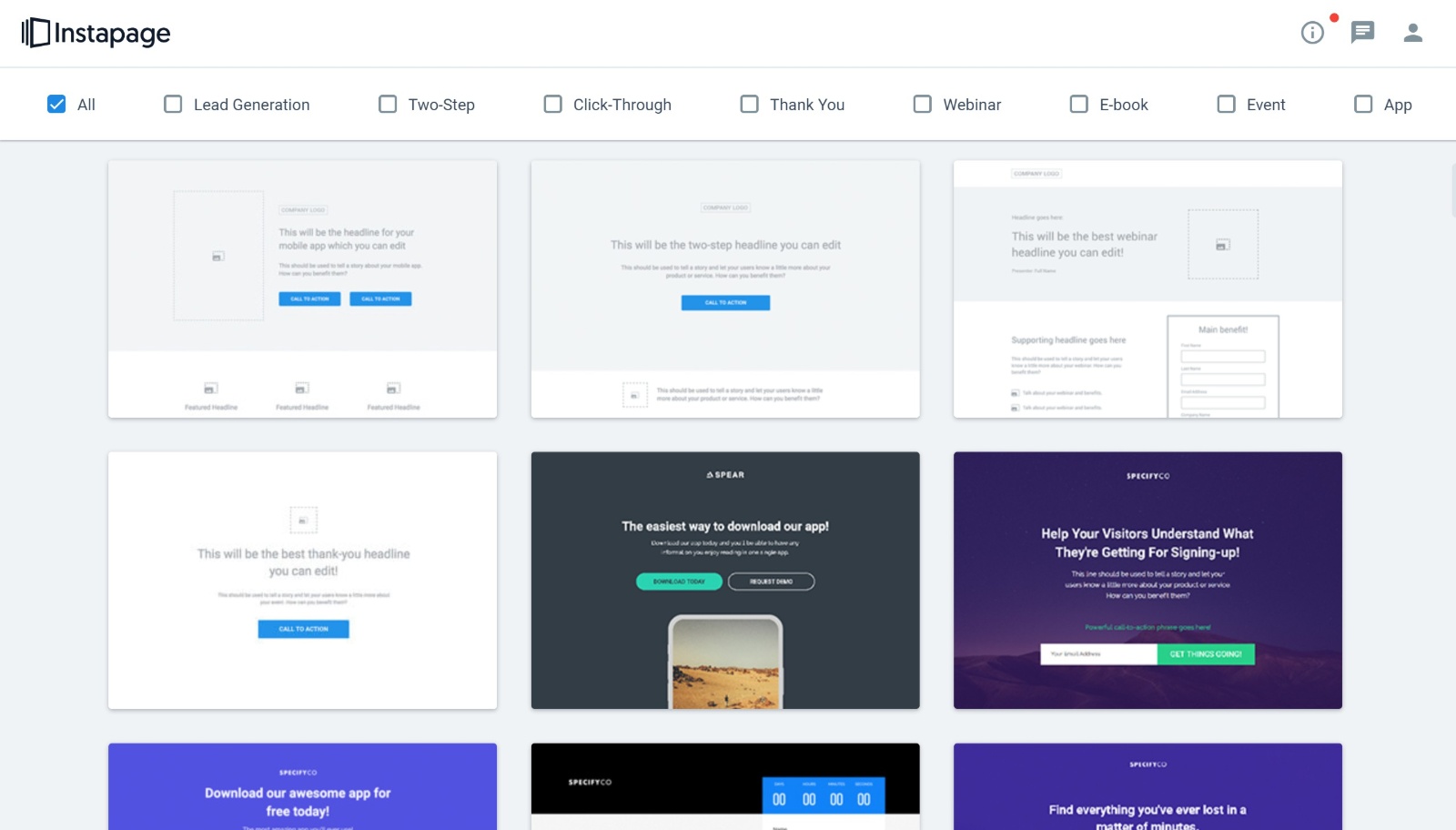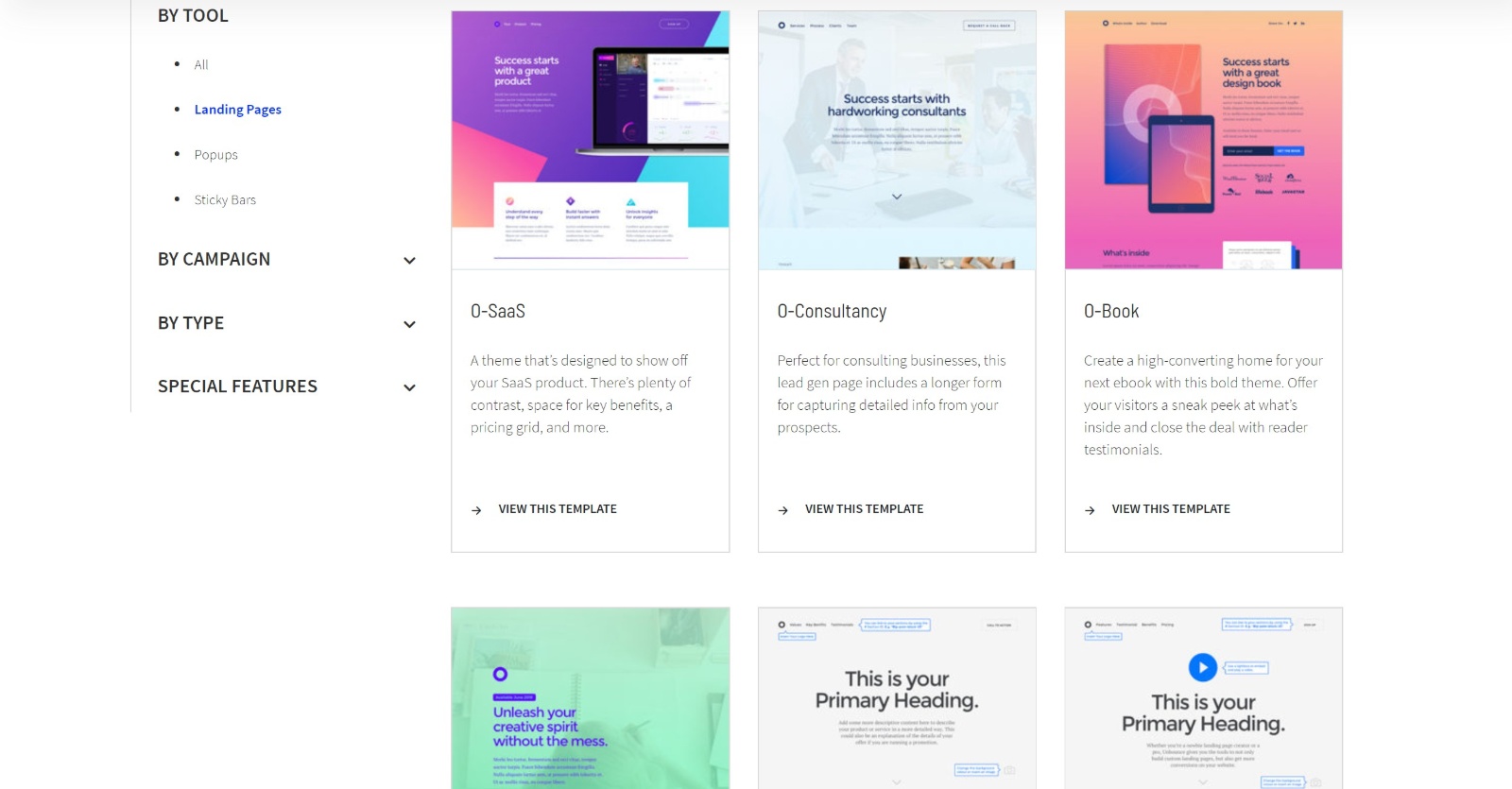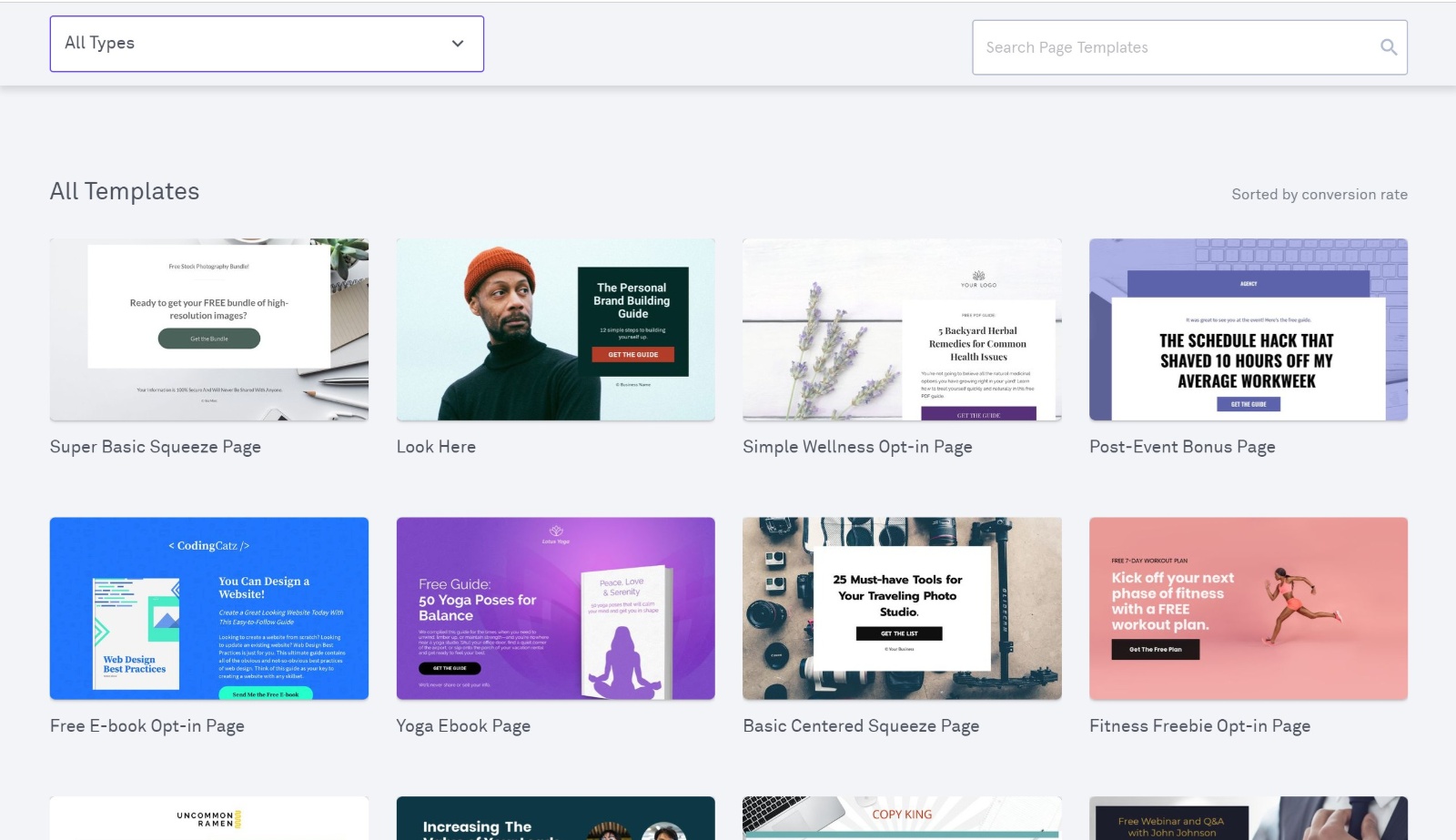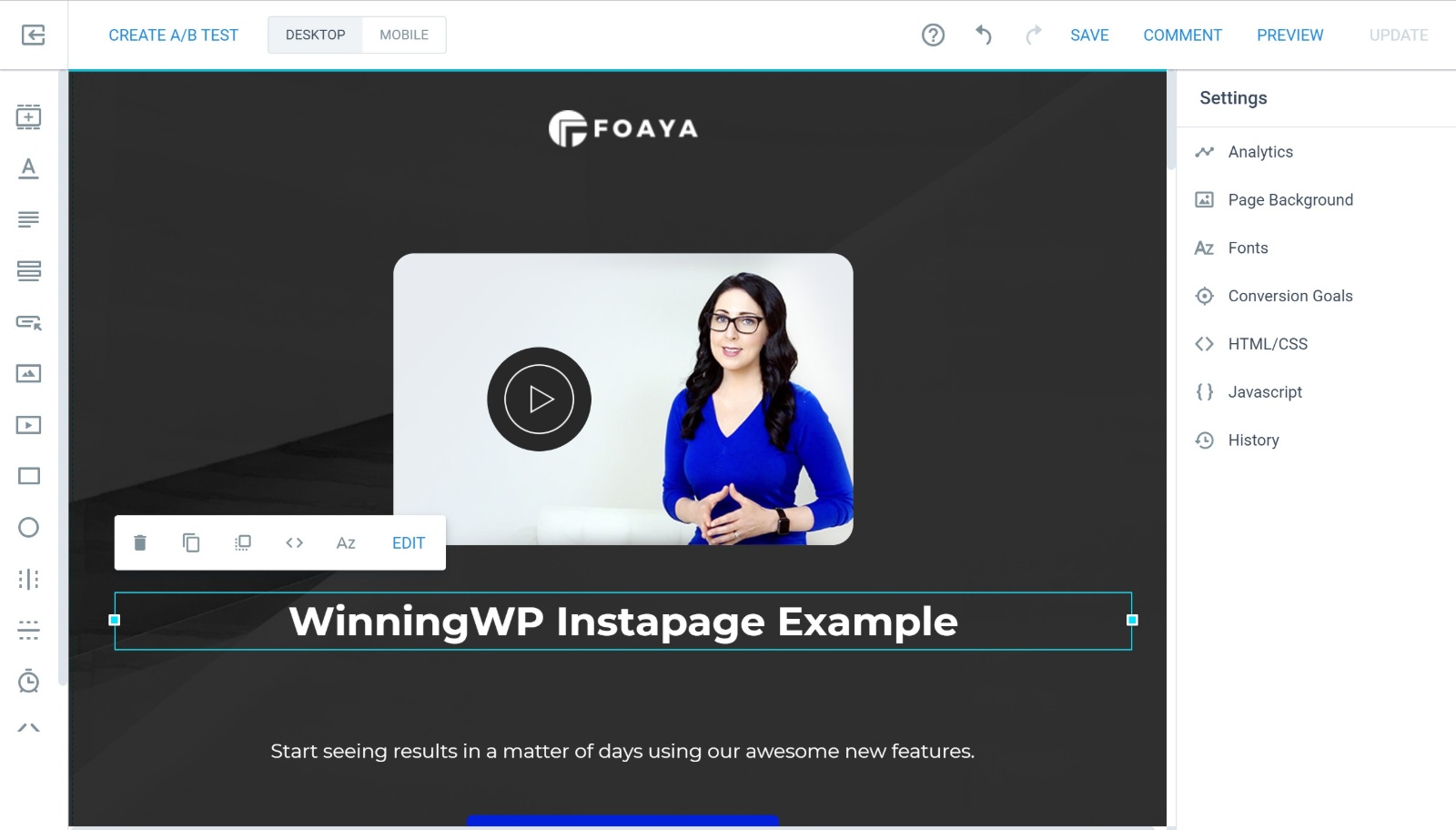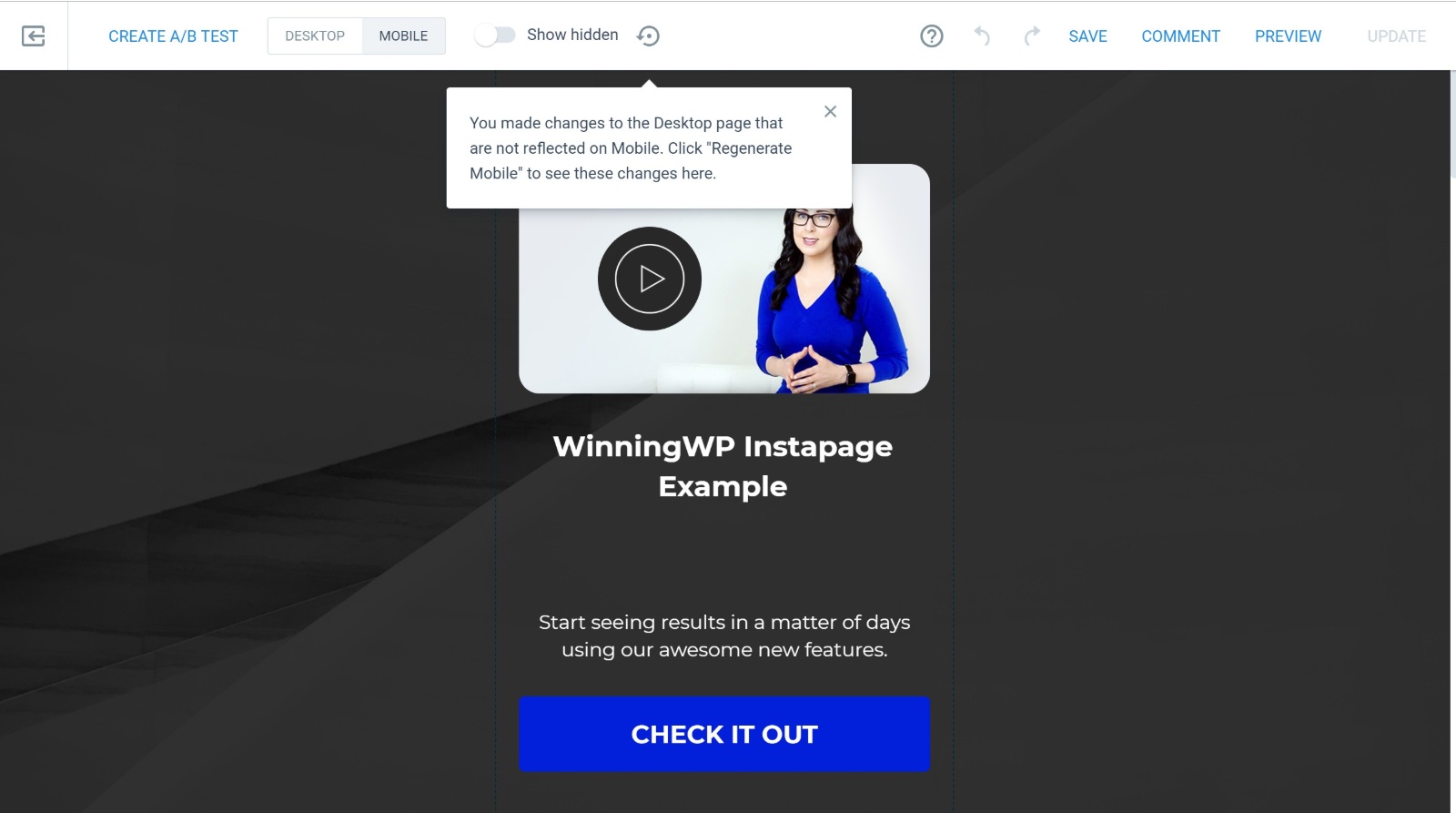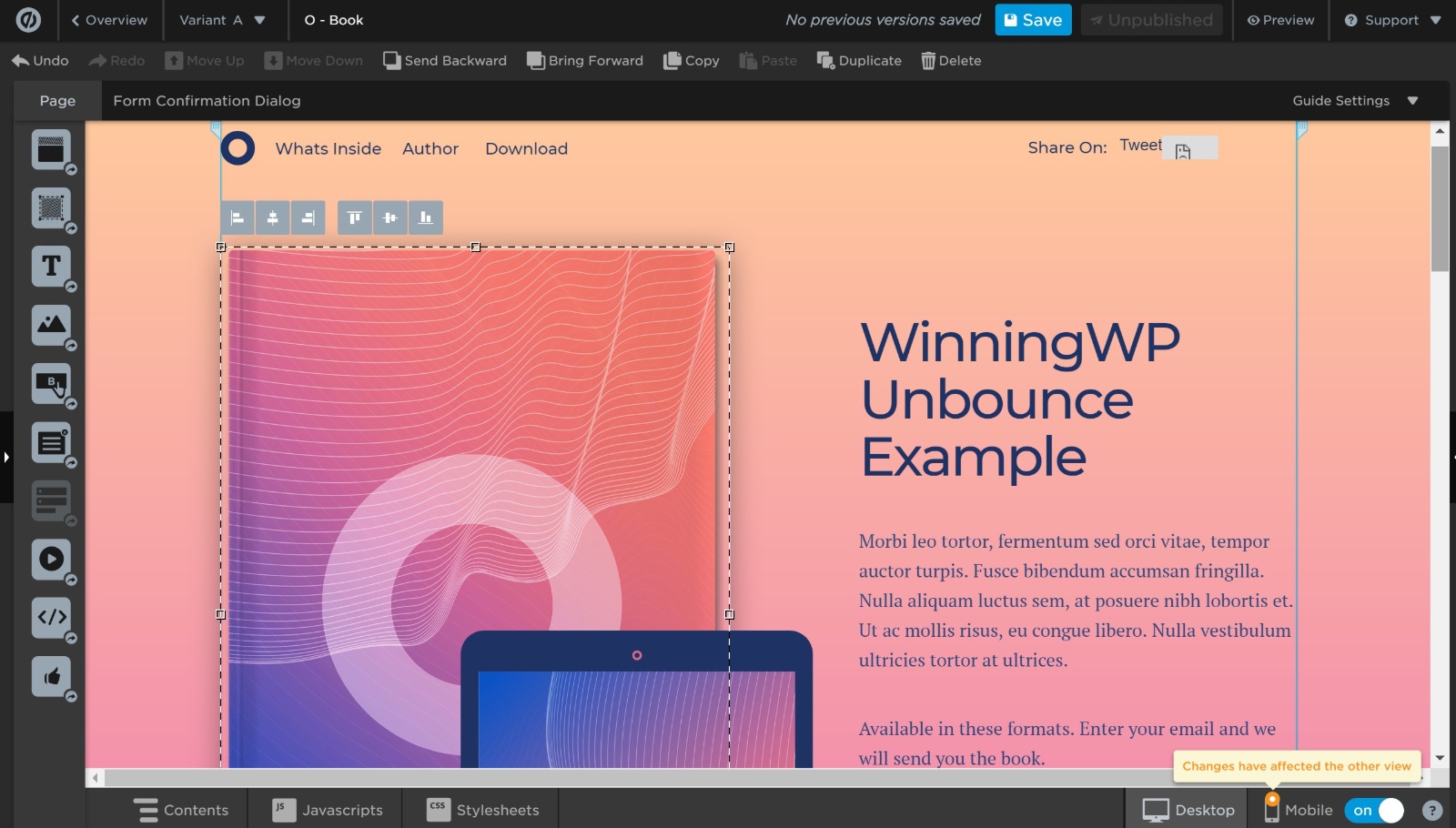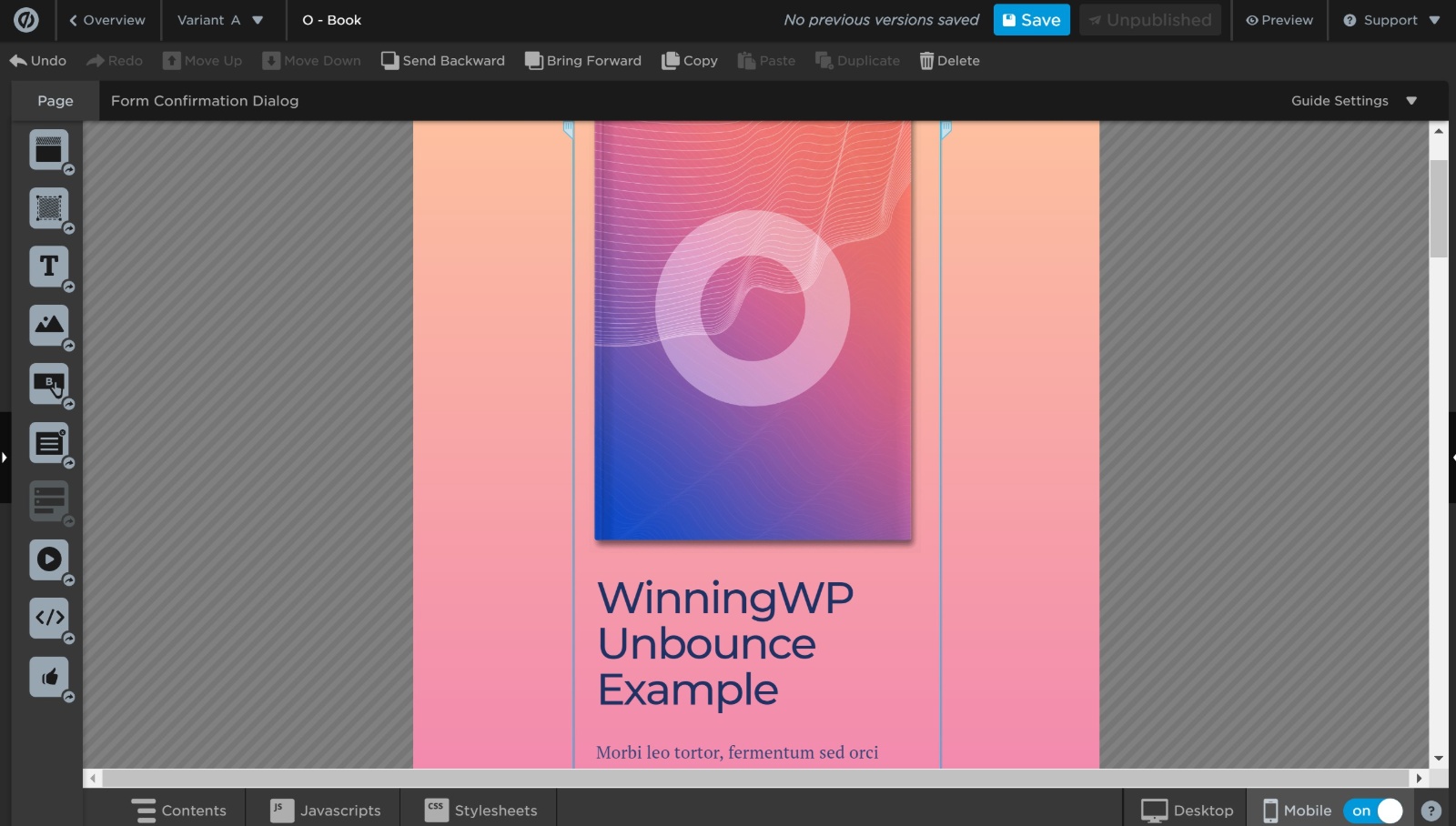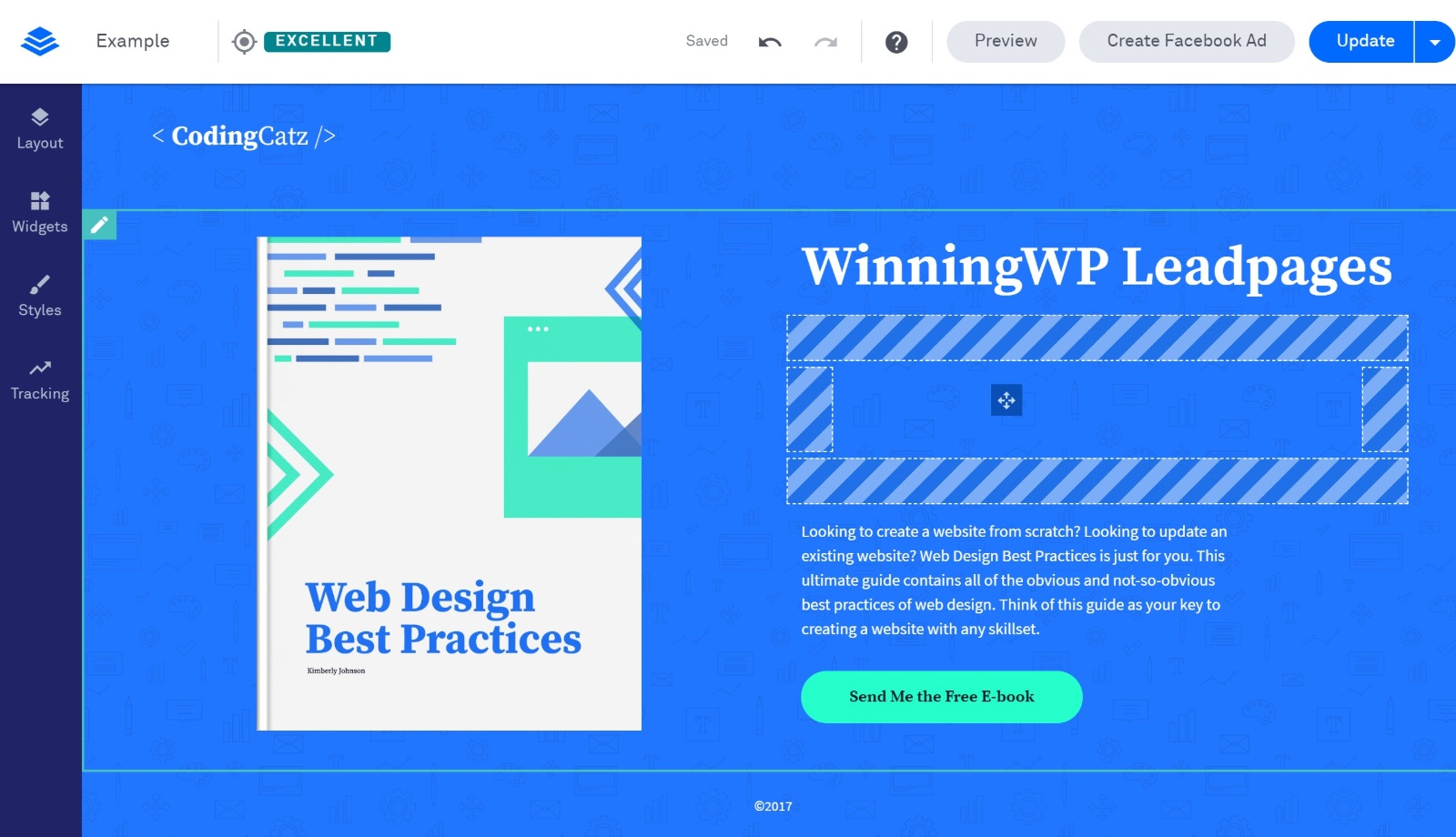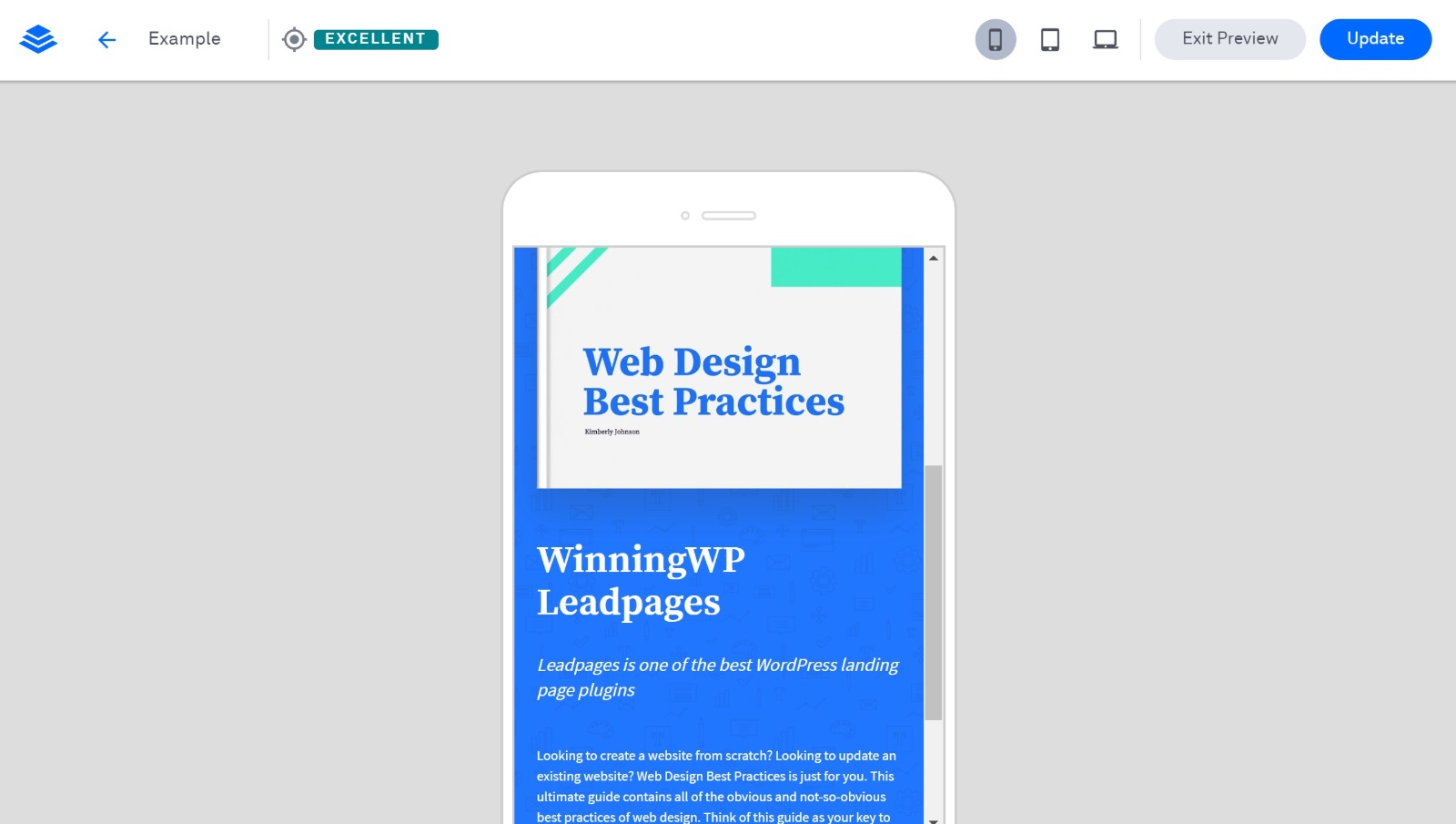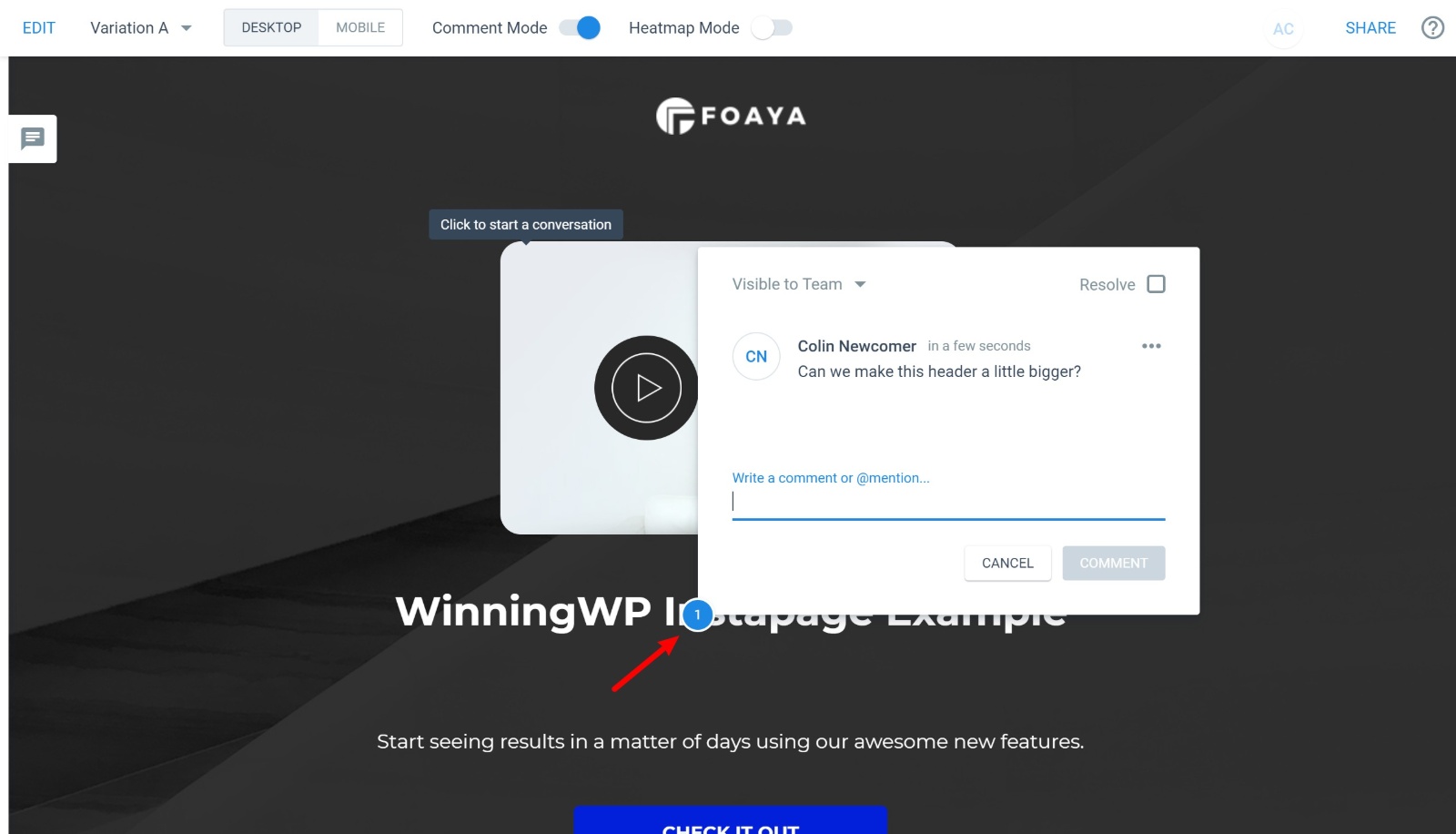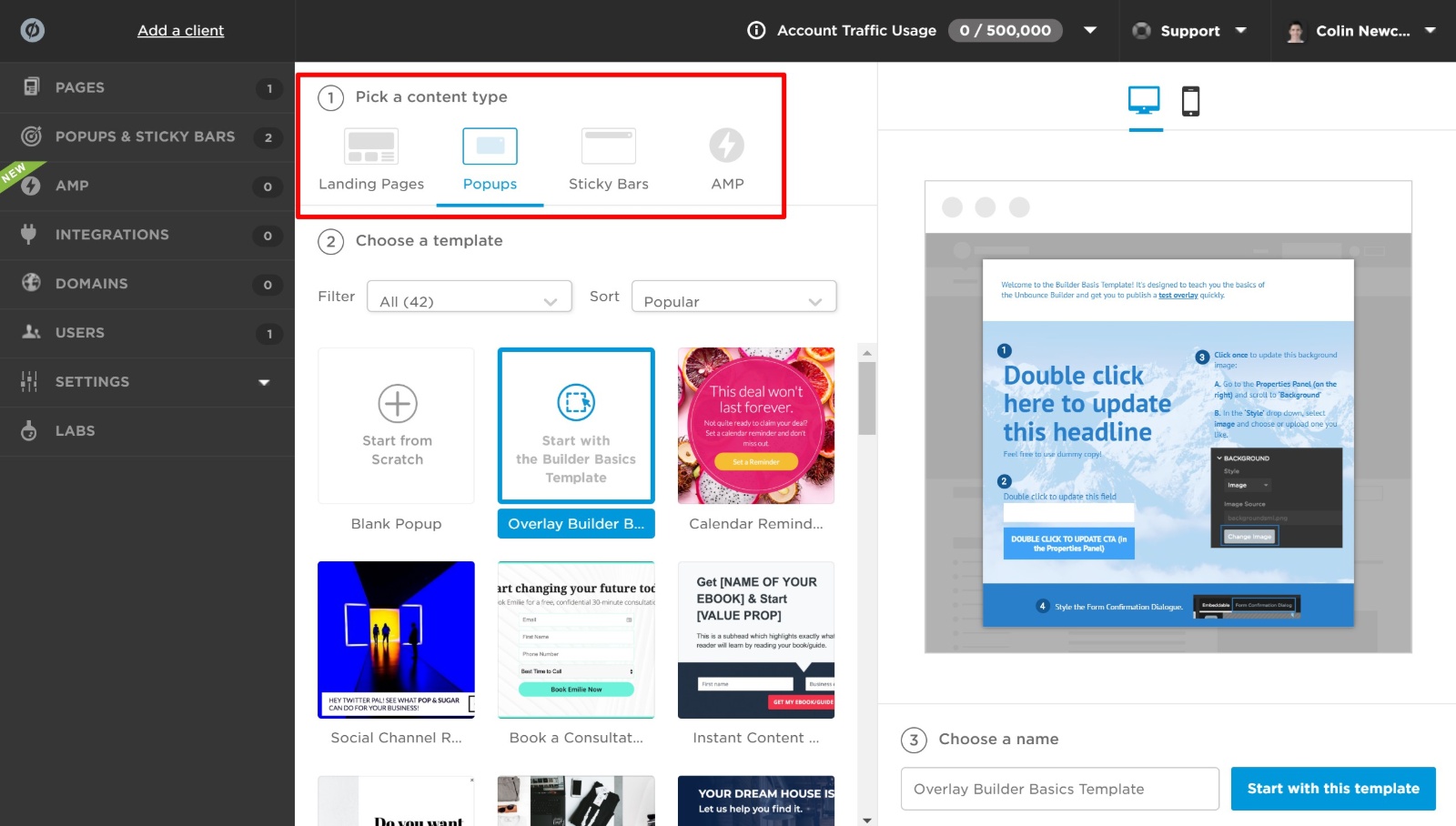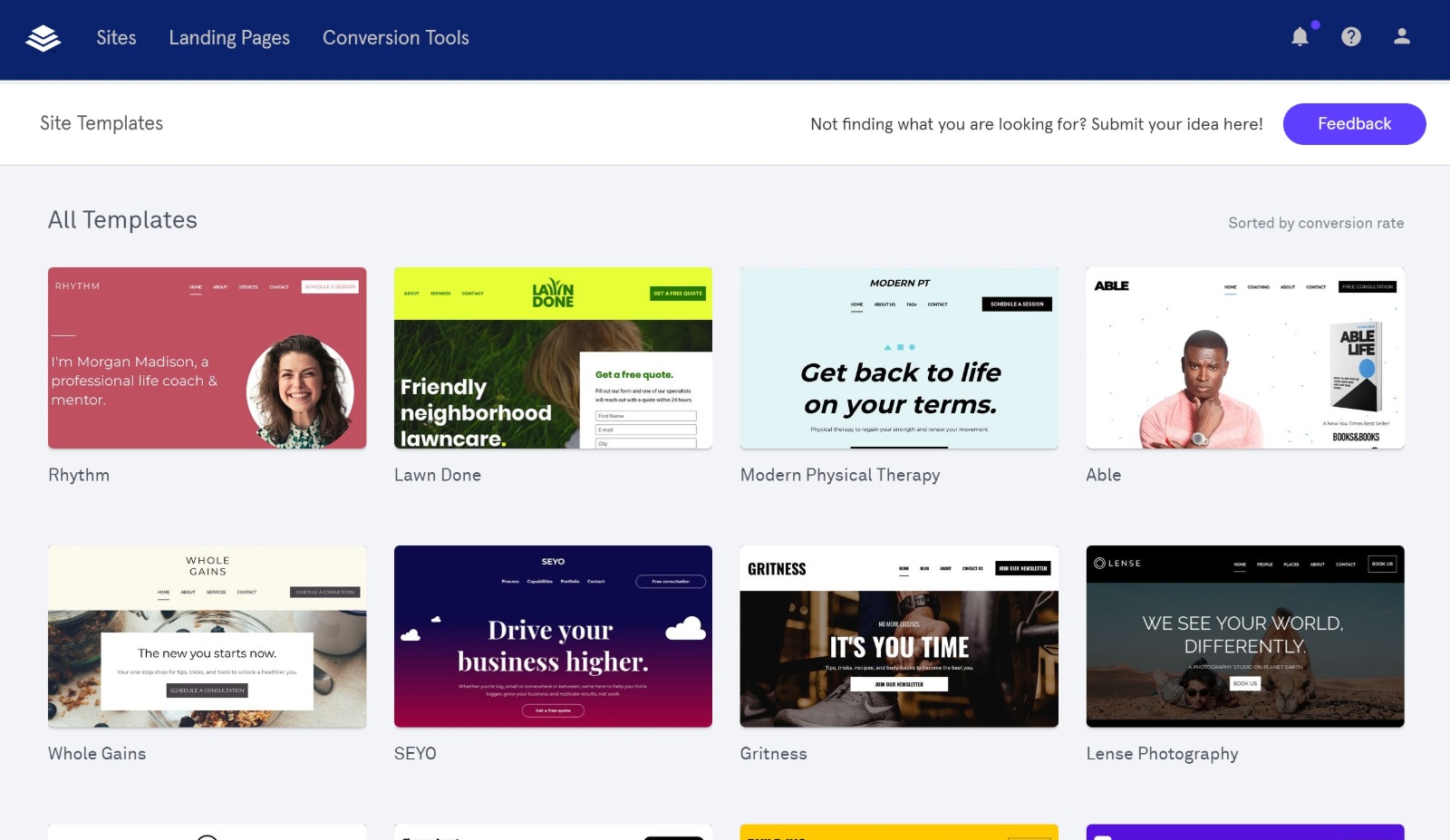- By
- Last updated:
Remember when you had to work with a developer every time you wanted to test a new landing page? Landing page builder tools like Instapage, Unbounce, and Leadpages have, thankfully, made that a thing of the past.
Now, using simple visual drag-and-drop, you can quickly design, deploy, and optimize as many landing pages as you want. And that means you can spend more time on the important stuff – converting visitors into customers or subscribers.
However, when it comes to Instapage vs Unbounce vs Leadpages, these three tools are not identical. Yes – they’re all quality tools, and yes – they’re all drag-and-drop landing page builders.
However, there are some feature differences that might make one tool better than another for your unique needs. In this post, I’m going to try and help you find those important differences by going hands-on with these three rather excellent landing page builders.
I’ll show you how the landing page builder interface works, what kind of templates and integrations you get, and the most unique things about each one of these tools.
Instapage vs Unbounce vs Leadpages: Some Quick Introductions
I’ll go more hands-on in a second, but let’s start off this comparison with a quick high-level look at how these three tools stack up, as each tool has a slightly different pricing structure, as well as a different focus.
Instapage started as “just” a landing page builder, but now calls itself a “post-click automation platform”. Now, I realize that is a little jargony, but it does highlight that Instapage is more focused on creating dynamic, personalized landing pages that match your ads, rather than just creating one-off static experiences for all visitors. There’s a lot to like about Instapage’s functionality, but it’s also the most expensive tool on this list.
Leadpages also started as a landing page builder, but now they’ve morphed into more of a general lead gen tool, with the addition of popups, notification bars, and even entire websites (like Squarespace). Leadpages is also the most affordable tool on this list by a good margin.
Unbounce has doubled down on the landing page focus, calling itself “the landing page platform”. Like Leadpages, Unbounce also lets you create notification bars and popups, though. Pricing wise, Unbounce sits in between Instapage and Leadpages.
Now that you have some context, let’s dig a little deeper…
Comparing the Templates
Building a landing page from scratch is a lot of work, so if you want to more rapidly deploy new landing pages, you’ll want a tool with a good set of pre-made templates.
All three tools do offer templates for you to choose from, but the selections are different.
Instapage
Instapage offers ~90 pre-made page templates for you to choose from. Instapage says they have 200+ templates, but I do not see 200+ templates in the interface, so I’m not sure where that number comes from.
These templates are divided into the following categories:
- Lead generation
- Two-step
- Click-through
- Thank you
- Webinar
- E-book
- Event
- App
The templates are clean, with modern looks and plenty of white space. And one thing I like is that they include some wireframe-like templates, which are nice if you just want a basic starting point:
Unbounce
Unbounce gives you access to 100+ pre-made templates that you can choose from when you create a new landing page.
They divide these templates into ten campaign types:
- Books
- Coming soon
- Click-through
- Events
- Products
- Ebook
- Lead generation
- Sales pages
- Webinar
- Ecourse
While beauty is in the eye of the beholder, I think that, in general, Unbounce’s templates look a little more “finished” than Instapage. Like Instapage, they also give you those “wireframe-y” type templates that you can use as a starting point:
Leadpages
Leadpages gives you access to 130+ templates for landing pages, as well as templates for entire websites.
These templates are divided into a variety of categories:
- About or Bio
- Author
- Checkout
- Consultation
- Contest or Giveaway
- Even
- Free Resource or Download
- Newsletter or Sign Up
- Offer, Discount, or Coupon
- Sales
- Thank You
- Upsell or Bonus
- Wait List or Coming Soon
- Webinar or Virtual Event
In general, the templates look pretty great. Additionally, Leadpages has a unique feature that lets you sort the templates by conversion rate. It’s a little gimmicky, as the exact conversion rate will depend on the content that you add. But still, I think there is some benefit to this option as it gives you some real-world basis for which templates to choose:
Comparing the Drag-and-Drop Editor
Whether you’re building a page from scratch or using one of the pre-made templates, your next stop is the landing page builder itself.
Here, all three tools offer a visual, drag-and-drop builder, but there are some key differences between the three that you’ll see.
Overall, I’d say that Instapage and Unbounce have the strongest editors when it comes to flexibility and control over mobile design. Leadpages still offers visual drag-and-drop design…it’s just a little more limited.
Instapage
The Instapage editor is super flexible.
Using drag-and-drop, you can move any element to any spot on the canvas. It’s not like a WordPress page builder where you’re constrained by a grid of rows/columns – instead, it’s 100% free-form:
You get plenty of widgets for adding content, including buttons, forms, countdown timers, etc.
Beyond that, you can also design separate layouts for desktop and mobile devices. Instapage will automatically make your desktop design responsive, but then you can activate the mobile mode to fully customize how the mobile version of the page works:
You can also create dedicated AMP designs, on the highest tier.
For those reasons, Instapage has one of my favorite editors of any tool on this list.
Unbounce
Unbounce’s drag-and-drop editor is right up there with Instapage, offering you that same free-form drag-and-drop design flexibility. Again, that means you’re not limited to a pre-made row/column grid like a page builder – you can just drag elements wherever you want them:
Like Instapage, you get widgets for forms, buttons, etc. And one unique thing about Unbounce’s builder is that it makes it really easy to add your own JavaScript or CSS.
Also like Instapage, you get the ability to fully customize the mobile version of your landing page, and you can also create dedicated AMP designs:
Overall, I’d say that Unbounce’s editor is a little more targeted towards developers because it has more advanced options whereas Instapage’s is a little more targeted towards designers because it’s focused more on the visual design. Both are great, though!
Leadpages
Unlike Instapage and Unbounce, Leadpages’ drag-and-drop editor is not free-form. Instead, like most WordPress page builder plugins, you can only move elements around within the grid that you’ve set up.
For example, you can see below that as I try to drag a subheading around, I can only move it to those suggested sections with the diagonal lines – I cannot place it exactly where I want like I could with Instapage and Unbounce:
Leadpages also lags behind when it comes to responsive design. While Leadpages will automatically make your designs responsive, you can’t go in and manually customize the mobile version of your page like you can with Instapage and Unbounce, nor do you get the AMP editing that those tools offer.
You get a mobile preview – but you can’t edit anything:
Leadpages is the most affordable tool by far, so these drawbacks look a little better when you remember that. Additionally, while I do still think Instapage and Unbounce have better editors, most people will still probably be fine with Leadpages’ editor.
Comparing the Other Features
While all of these tools might’ve started as landing page builders, they give you plenty more functionality beyond landing page templates and a drag-and-drop builder.
Let’s dig into that next…
Instapage
- A/B testing.
- Integrated conversion analytics and heatmaps.
- 1:1 ad-to-page personalization that lets you deliver dynamic landing page experiences based on where a person is coming from, including dynamic text replacement.
- Detailed collaboration features, which are great for working with a team. Team members can leave comments directly on landing pages, which makes for a faster feedback process.
- Publish to WordPress, Drupal, or a custom domain name.
Unbounce
- A/B testing.
- Integrated conversion analytics.
- Design popups and notification bars in addition to landing pages.
- Dynamic text replacement to personalize landing pages based on visitors’ search terms.
- Publish to WordPress or your own custom domain name.
Leadpages
- A/B testing.
- Integrated conversion analytics.
- Design popups and notification bars in addition to landing pages.
- Publish to WordPress or your own custom domain name.
- Create entire websites, like Squarespace or Wix.
- Sell digital products right from landing pages or popups with an integrated checkout powered by Stripe.
- Create Facebook or Instagram ads that are pre-populated with landing page content.
Comparing the Integrations
Depending on your use, you’ll probably want to integrate with your own email marketing service, CRM, webinar service, etc.
All three tools offer a good array of integration options, but if there’s a specific service you absolutely must use, I’d recommend checking each list closely.
Instapage
Instapage offers 40+ integrations divided into a bunch of categories:
- Advertising
- Analytics
- Call tracking
- CRM
- E-commerce
- Email Marketing
- Exit Intent & Pop-ups
- Live chat
- Marketing automation
- Other
- Webinar
The list can be a little slim at points – for example, the only webinar service is GoToWebinar. However, there are also Zapier and Webhooks integrations, which gives you a lot more flexibility to connect to other apps.
Unbounce
Unbounce only offers 13+ in-app integrations, which is lower than the 40+ built-in integrations that Instapage and Leadpages offer. However, you can also use Zapier and Webhooks, which opens up a lot more opportunities. Unbounce even has 60+ pre-built Zapier recipes that you can use right from your dashboard.
These integrations are divided into:
- Utilities
- CRM
- Chat
- Social
- Marketing automation
- Customer support
- Call tracking
- Education
- Analytics
- Webinar
- Optimization/testing
Leadpages
Leadpages advertises 40+ standard integrations divided into:
- Analytics
- CRM
- Digital advertising
- Ecommerce
- Email marketing
- Live chat
- Marketing automation
- Other
- Payments
- Scheduling
- Social media
- Video
- Webinar
- Website
Higher-tier plans also get access to Advanced Integrations for Salesforce, Hubspot, and Marketo.
To give you an example of the extra options, Leadpages gives you three different webinar integrations – GoToWebinar, WebinarJam, and Zoom. However, only GoToWebinar and WebinarJam are integrated, while Zoom makes you go through Zapier.
Comparing the Pricing
In terms of pricing, here’s how these tools stack up from, in order of most affordable to most expensive:
- Leadpages
- Unbounce
- Instapage
Instapage
Instapage only has one pre-set tier – the Core plan. Beyond that, they have an Enterprise plan that’s customized to your needs (and has a custom price to match).
If you’re interested in the Core plan, you’ll pay either $129 per month billed monthly or $99 per month billed annually. That gets you access to the builder, A/B testing, analytics, etc.
If you want personalization, AMP support, and more, you’ll need to go with the Enterprise plan.
You can also get a 14-day free trial – no credit card required.
Unbounce
In terms of pricing, Unbounce is kind of the Goldilocks – coming in between Leadpages and Instapage.
One thing to keep in mind, though, is that Unbounce limits the number of published landing pages you can have by the different account tiers. You can create unlimited pages in your account – the limit just applies to how many are published live at a time. There are also some other feature differences between the tiers.
The cheapest Essential tier costs $99 per month billed monthly or $79 per month billed annually. It lets you publish 75 landing pages at a time and 8 popups/sticky bars.
Next, the Premium plan costs $199 billed monthly or $159 billed annually and lets you publish 150 landing pages and 16 popups and sticky bars.
Finally, there’s also a customizable Enterprise tier if your needs go beyond those plans. It starts at $399 billed annually and goes up from there.
Leadpages
In terms of entry-level price points, Leadpages is the most affordable option by a mile. Additionally, all the plans let you create unlimited landing pages, popups, and alert bars.
The cheapest Standard plan only costs $37 per month billed monthly or $25 per month billed annually. It lets you use the full builder, but it lacks A/B testing, which is a pretty big omission.
If you want A/B testing, you’ll need the Pro plan, which costs $79 per month billed monthly or $48 per month billed annually, which is still well underneath the other two tools.
Finally, there’s an Advanced plan which costs $321 billed monthly or $199 billed annually. It adds on more integrations, sub-accounts, and a one-on-one quick start call.
What’s Unique About Each Tool?
To finish out this Instapage vs Unbounce vs Leadpages comparison, I think it’s helpful to try and highlight what makes each tool unique.
I mean, at a basic level, there are a lot of similarities. All of them give you a bunch of landing page templates that you can customize with a drag-and-drop editor. All of them give you A/B testing and analytics…
So beyond the differences that I’ve already highlighted, what are some big things about each tool that might make you choose that tool over the others?
Instapage
The three big things that stick out to me about Instapage are:
- Its flexible, grid-less editor with mobile design control.
- All of its built-in team collaboration features.
- The built-in personalization options and ad integrations
To that first point, I think you’ll love the flexibility that Instapage’s editor gives you, with its grid-less drag-and-drop design and ability to fully control how your landing page looks on mobile.
Second, there are all those collaboration features. If you’re working in a team and you need to go back-and-forth with feedback for landing pages, you’ll love Instapage’s InVision-like feedback system where you can just click on the preview and leave a comment. Here’s an example:
Finally, Instapage has a big focus on personalization. So if you’re interested in integrating personalization and automation into your landing pages, that’s another big reason to consider Instapage.
Unbounce
First off, Unbounce’s editor is one of its high points. It’s right up there with Instapage and gives you lots of nice features like:
- Grid-less, drag-and-drop design.
- Full control over the layout on both desktop and mobile.
- Advanced features to help you add your own JavaScript or CSS.
Unlike Instapage, you can use that editor for more than just landing pages – you can also build popups and sticky bars with the same design flexibility
So if you:
- Want a detailed editor, along with the ability to build landing pages, popups, and notification bars.
- Don’t need those advanced personalization and collaboration features*.
Then that might be a reason to choose Unbounce over Instapage.
*Unbounce still offers dynamic text replacement, so you do get some personalization.
Leadpages
First off, Leadpages is the most affordable tool on this list by a good bit. So if you’re on a budget, that’s already one big thing in Leadpages’ favor.
As I mentioned, I think the tradeoff for that affordability is that Leadpages has the weakest editor on the list. However, you are quite flexible in what you can build with that editor:
- Landing pages
- Popups
- Alert bars
And the latest version even lets you build entire websites, which none of the other tools offer. So if you want to build an entire site, a la Squarespace, that’s another big point in Leadpages’ favor. You even get a bunch of full website templates, much like you get landing page templates:
Finally, Leadpages also offers its own integrated checkout system powered by Stripe, which is another unique feature. You can sell and deliver digital products right from your landing pages without the need for any external solutions.
Which Landing Page Builder Is Right For You?
Instapage, Unbounce, and Leadpages are all great tools, so you won’t make a “wrong” decision here. Instead, it’s more about picking the tool that best fits your needs.
I hope by digging in and going hands-on, I’ve been able to illuminate some of those differences that will help you make that decision.
If I had to sum it up, I’d say:
- Instapage – Great editor, advanced personalization tools, helpful team collaboration features…but also the most expensive.
- Unbounce – Also a great editor, can be used for more than just landing pages, is a little more affordable than Instapage.
- Leadpages – Editor is not quite as flexible, but is the most affordable by far, and also lets you build landing pages, popups, notification bars, and entire websites, along with integrated payments powered by Stripe.
Using or used Instapage, Unbounce, or Leadpages? Thoughts?
